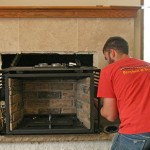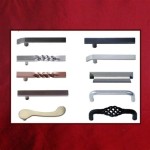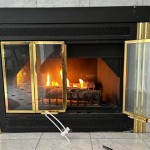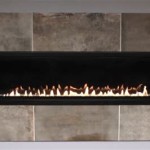Are Gas Fireplace Inserts Worth It? A Comprehensive Analysis
Gas fireplace inserts have gained significant popularity as a method for upgrading existing wood-burning fireplaces. They offer a range of benefits, including improved efficiency, convenience, and aesthetics. However, determining whether a gas fireplace insert is a worthwhile investment requires careful consideration of various factors, including cost, installation requirements, heating needs, and personal preferences. This article provides a comprehensive analysis of the pros and cons of gas fireplace inserts to help homeowners make an informed decision.
Enhanced Efficiency and Heating Performance
One of the primary reasons homeowners consider gas fireplace inserts is their improved energy efficiency compared to traditional wood-burning fireplaces. Wood-burning fireplaces are notorious for their inefficiency, often losing a significant portion of the heat up the chimney. This can result in a net loss of heat in the home and increased energy bills. Gas fireplace inserts, on the other hand, are designed to be much more efficient, with some models boasting efficiency ratings of 70% to 90% or higher. This means that a greater proportion of the heat generated is directed into the room, rather than escaping through the chimney.
This improved efficiency translates to lower heating costs and a more comfortable living environment. Gas fireplace inserts often feature thermostatic controls, allowing homeowners to precisely regulate the temperature of the room. This eliminates the fluctuations in temperature that are common with wood-burning fireplaces. Furthermore, many gas fireplace inserts are equipped with features such as blowers, which circulate the warm air throughout the room, ensuring even heating and minimizing cold spots.
The superior heating performance of gas fireplace inserts makes them a viable supplemental heating source, particularly in colder climates. By effectively heating the room where the insert is located, homeowners can reduce their reliance on their central heating system, potentially leading to significant energy savings. This can be especially beneficial during shoulder seasons, when the temperatures are mild enough that running the central heating system for the entire house is unnecessary. In these situations, a gas fireplace insert can provide targeted heating to the occupied areas of the home.
Convenience and Ease of Use
Another significant advantage of gas fireplace inserts is their convenience. Unlike wood-burning fireplaces, which require a constant supply of firewood and manual tending, gas fireplace inserts are incredibly easy to operate. With the push of a button or the flip of a switch, the fireplace can be ignited, providing instant heat and ambiance. There is no need to chop wood, haul it indoors, or build a fire. This makes gas fireplace inserts an attractive option for individuals who value convenience and ease of use.
Beyond the ease of ignition, gas fireplace inserts also require minimal maintenance compared to wood-burning fireplaces. There is no ash to clean up, no chimney to sweep as frequently (although annual inspections are still recommended), and no need to worry about creosote buildup. This reduces the amount of time and effort required to maintain the fireplace, allowing homeowners to enjoy the benefits of a fireplace without the associated hassles.
The convenience of gas fireplace inserts extends to their versatility in terms of fuel options. They can be fueled by either natural gas or propane, depending on the availability of gas lines and the homeowner's preference. Propane offers the advantage of being readily available in tanks, making it a suitable option for homes that do not have access to natural gas. Natural gas, on the other hand, is typically more cost-effective in the long run, as it is supplied through a network of pipelines.
Aesthetic Appeal and Design Options
Gas fireplace inserts offer a wide range of aesthetic options to complement any home décor. They are available in various styles, finishes, and sizes, allowing homeowners to customize the look of their fireplace to their specific tastes. Whether it's a traditional, modern, or rustic design, there is a gas fireplace insert to match the desired aesthetic.
Many gas fireplace inserts feature realistic-looking artificial logs that mimic the appearance of a wood-burning fire. These logs are often crafted from ceramic or refractory materials and are designed to withstand high temperatures without deteriorating. The flame patterns can also be adjusted to create a more realistic and visually appealing fire. Some models even feature ember beds that glow and flicker, further enhancing the ambiance of the fireplace.
In addition to the visual appeal of the flames and logs, gas fireplace inserts can also enhance the overall look of the fireplace hearth. They can be installed with decorative surrounds, mantels, and other accessories to create a focal point in the room. These additions can transform a dated or unattractive fireplace into a stylish and inviting feature.
Cost Considerations and Installation Requirements
The cost of a gas fireplace insert can vary depending on the model, size, features, and installation requirements. Generally, the upfront cost of a gas fireplace insert is higher than that of a traditional wood-burning fireplace. However, the long-term operating costs may be lower due to the improved energy efficiency and reduced maintenance requirements. The initial investment typically includes the cost of the insert itself, as well as installation expenses.
Installation of a gas fireplace insert should be performed by a qualified professional to ensure safety and compliance with local building codes. The installation process may involve running gas lines, venting the exhaust gases, and securing the insert within the existing fireplace opening. Proper venting is crucial to prevent the buildup of carbon monoxide, a dangerous and potentially lethal gas. A professional installer will ensure that the venting system is properly sized and installed to meet safety standards.
In addition to the installation costs, homeowners should also factor in the ongoing expenses associated with operating a gas fireplace insert. These expenses include the cost of natural gas or propane, as well as annual maintenance and inspection fees. While the cost of natural gas or propane can fluctuate depending on market conditions, the overall operating costs are typically lower than those associated with wood-burning fireplaces, which require a constant supply of firewood.
Potential Drawbacks and Limitations
Despite the numerous advantages of gas fireplace inserts, there are also some potential drawbacks to consider. One of the main limitations is the dependence on a gas supply. During power outages, gas fireplaces may not function if they rely on an electric ignition system. However, some models are equipped with battery backups or manual ignition systems to provide heat during power outages.
Another potential drawback is the aesthetics. While modern gas fireplace inserts can mimic the look of a wood-burning fire quite well, some individuals may still prefer the authentic crackling sound and smell of real wood. Additionally, the artificial logs and flame patterns may not be as visually appealing to some as a natural wood-burning fire.
Furthermore, gas fireplace inserts can sometimes be more expensive to repair than wood-burning fireplaces. If a component fails, such as the gas valve or ignition system, it may require a professional technician to diagnose and repair the problem. This can lead to higher repair costs compared to simpler repairs that can be performed on a wood-burning fireplace.
Finally, it's important to consider the environmental impact of burning gas. While gas fireplaces are generally cleaner-burning than wood-burning fireplaces, they still release greenhouse gases into the atmosphere. Individuals who are concerned about their carbon footprint may want to consider alternative heating options, such as electric fireplaces or heat pumps.

Gas Fireplace Insert Cost Forbes Home

Is A Gas Fireplace Worth It

Gas Fireplace Inserts The Advantages Efficiency

All About Gas Fireplace Inserts Advice We Love Fire

Fireplace Insert Guide Everything You Need To Know Friendly Fires

How Fireplace Inserts Work We Love Fire
:max_bytes(150000):strip_icc()/ventless-gas-fireplaces-4160746-hero-f9d4bdcd9bd446eb84406de306f790ba.jpg?strip=all)
How To Pick Out A Ventless Gas Fireplace
How To Install Gas Fireplace Insert Heat Glo

Fireplace Inserts Everything You Need To Know Full Service Chimney

How Much Does It Cost To Install A Gas Fireplace Homeserve Usa
Related Posts








